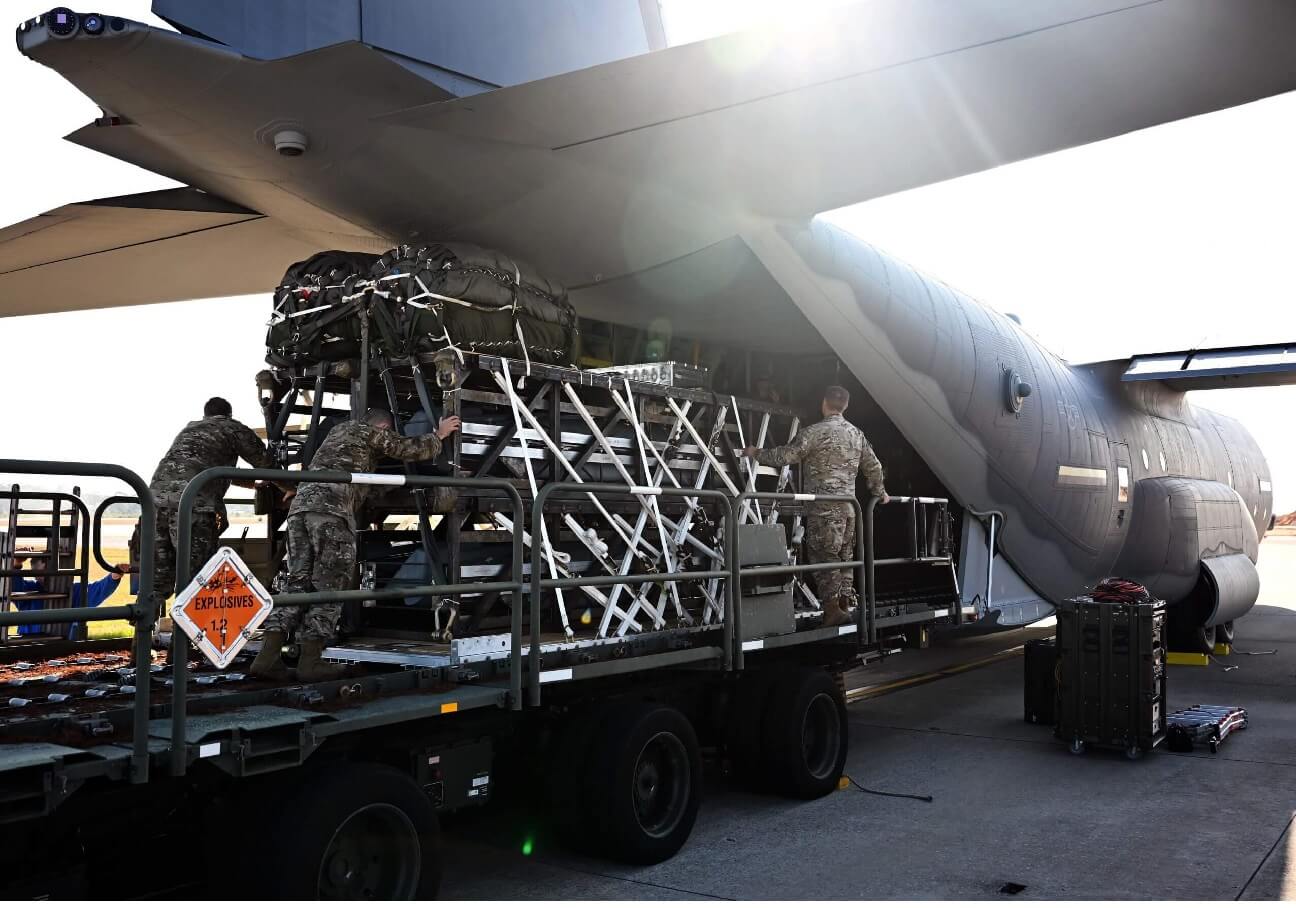The US will test the Rapid Dragon airdropped palletized weapons system over the Norwegian Sea sometime between November 9 to 11, reported the Barents Observer.
The Rapid Dragon air-launched palletized munitions concept aims to test the viability and operational benefits of dropping long-range palletized weapons from existing airlift platforms like the C-130 and C-17 without modifying the aircraft.
For the first time, the United States and NATO members will test this striking capability inside the Arctic Circle, the report said. US Army Cpt. Margaret Collins told the news outlet that the region off the coast of Northern Norway was chosen because of the size required for the test.
The test location, which lies in Northern Norway to the west of Andøya and Tromsø, is approximately 150 kilometers long and 100 kilometers wide.
The US Army and the Norwegian Joint Headquarters have not disclosed any information regarding the missiles that would be utilized in the upcoming drills. However, in December 2021, a stealthy AGM-158 Joint Air-to-Surface Standoff Missile (JASSM) variant was reportedly deployed for live-firing tests as part of Rapid Dragon.

Public Affairs Officer, Cpt. Margaret Collins said, “we will demonstrate the weapon when training interoperability with our NATO partners. This is the first time a live fire of the system will happen in training.”
She explained that the Rapid Dragon live firing outside Northern Norway is part of special forces training. The exercise is also going to take place in Poland and Romania.
A C-130J Super Hercules aircraft carrying the Rapid Dragon will take off from the United Kingdom. The weapon system can potentially provide NATO members with considerable offensive capabilities.
Using the current fleet of transport aircraft, the United States could quickly offer any NATO member an extensive strike capability. These aircraft, including the Hercules, can land on runways as short as 900 meters.
The roll-on, roll-off architecture of the missile module enables quick deployment and eliminates the need to modify the aircraft. Like other airdrops, the Rapid Dragon plan calls for cargo planes to launch dozens of missiles bundled into big “pellets” from their main doors.
Weapons will be released systematically when the module is parachuted. After the vertical release, the cruise missile flight test vehicle will perform a powered pull-up maneuver, extend its wings and tail, establish aerodynamic control, and begin traveling toward its newly designated target.
The report noted that the exact timeframe of the Rapid Dragon live firing will not be published throughout the three days of the test. Cpt. Collins explained that specifics about the test could not be disclosed but that it could take place depending on the weather.
Growing Russia, China Military Partnership
The news comes when several defense experts have underlined the expanding cooperation between Russia and China in the Arctic. Moscow and Beijing have increased their military posture in the resource-rich Arctic.
In September, a US Coast Guard ship conducting a routine patrol in the Bering Sea off Alaska unexpectedly came across Chinese and Russian warships. It is worth noting that Moscow regularly conducts military drills in the Arctic, including in the Chukchi Sea and along the Taymyr Peninsula.
A Northern Fleet vessel tested a Tsirkon hypersonic cruise missile close to Norway’s Bear Island in the Barents Sea just days before Russia launched the invasion of Ukraine.
The Arctic Ocean’s significance to Russia was also stressed in a new naval doctrine released in August. On the other hand, China intends to expand its presence to achieve blue-water navy capabilities.
As a result, the United States and its allies must maintain a consistent military presence in the region.
In line with this, the Rapid Dragon is designed to release a swarm of cruise missiles to conduct a coordinated attack on air defense systems like the S-300 and S-400.
These are the air defense systems that Russia’s Northern Fleet has deployed around the Kola Peninsula’s coast to defend the strategically important submarine bases.

The Norwegian government has designated Andøya Air Base as a location for receiving partner forces in an emergency or conflict.
The nation’s fleet of P-3 Orion maritime surveillance aircraft is currently housed at the air base, which is located on the coast of the exercise area.
Corporal Jonny Karlsen, a spokeswoman for the Norwegian Joint Headquarters, stated that this type of integrated training with close partners improves the joint ability to collaborate in “immediate areas.”
The US Army claimed that the exercise was not intended to send a message to Russia or any other adversary. However, the upcoming test of Rapid Dragon certainly highlights the USA’s efforts to deter Russia and China in the region.
- Contact the author at ashishmichel@gmail.com
- Follow EurAsian Times on Google News




